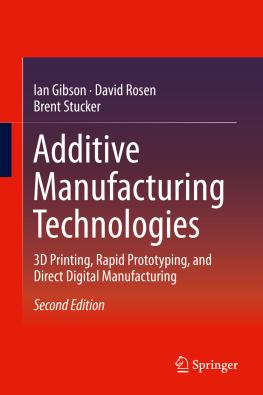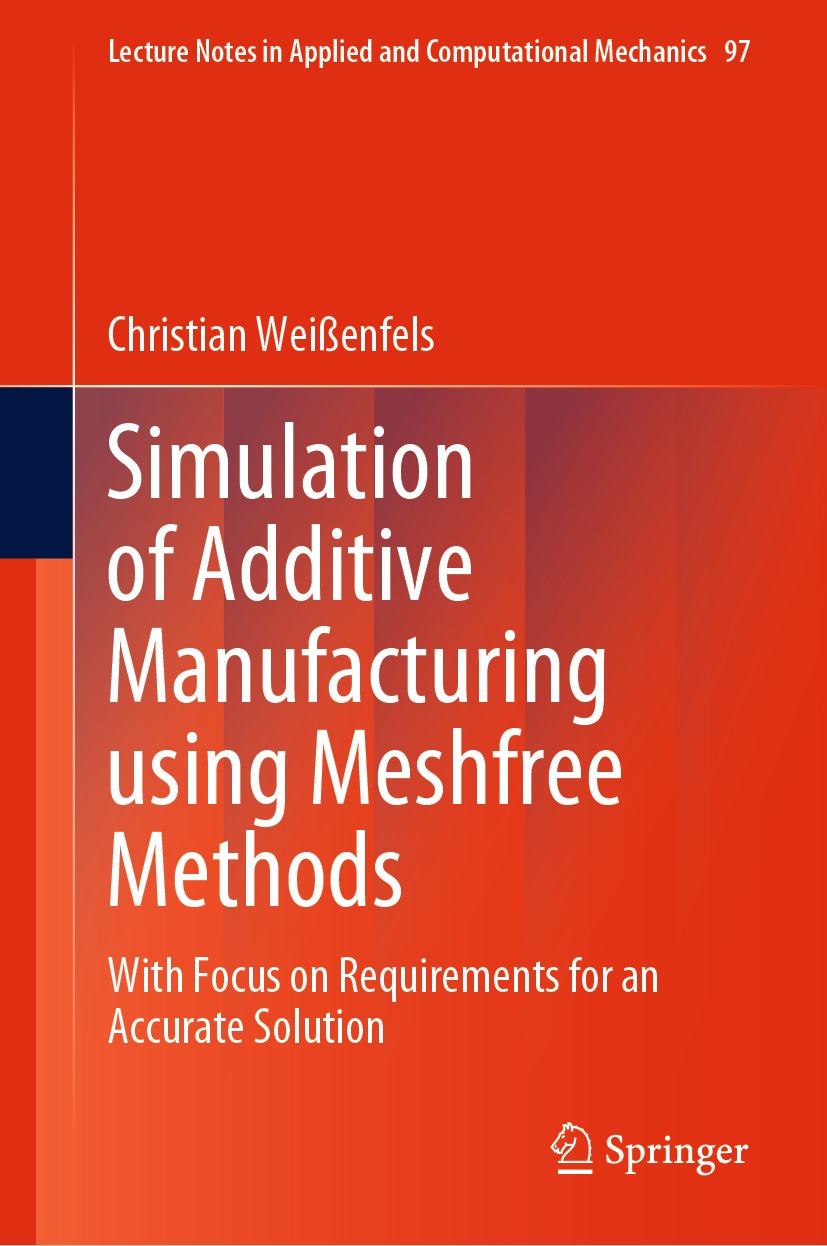Volume 97
Lecture Notes in Applied and Computational Mechanics
Series Editors
Peter Wriggers
Institut fr Kontinuumsmechanik, Leibniz Universitt Hannover, Hannover, Niedersachsen, Germany
Peter Eberhard
Institute of Engineering and Computational Mechanics, University of Stuttgart, Stuttgart, Germany
This series aims to report new developments in applied and computational mechanics - quickly, informally and at a high level. This includes the fields of fluid, solid and structural mechanics, dynamics and control, and related disciplines. The applied methods can be of analytical, numerical and computational nature. The series scope includes monographs, professional books, selected contributions from specialized conferences or workshops, edited volumes, as well as outstanding advanced textbooks.
Indexed by EI-Compendex, SCOPUS, Zentralblatt Math, Ulrichs, Current Mathematical Publications, Mathematical Reviews and MetaPress.
More information about this series at http://www.springer.com/series/4623
Christian Weienfels
Simulation of Additive Manufacturing using Meshfree Methods
With Focus on Requirements for an Accurate Solution
1st ed. 2022

Logo of the publisher
Christian Weienfels
Institute of Continuum Mechanics, Leibniz University Hannover, Garbsen, Germany
ISSN 1613-7736 e-ISSN 1860-0816
Lecture Notes in Applied and Computational Mechanics
ISBN 978-3-030-87336-3 e-ISBN 978-3-030-87337-0
https://doi.org/10.1007/978-3-030-87337-0
The Editor(s) (if applicable) and The Author(s), under exclusive license to Springer Nature Switzerland AG 2022
This work is subject to copyright. All rights are solely and exclusively licensed by the Publisher, whether the whole or part of the material is concerned, specifically the rights of translation, reprinting, reuse of illustrations, recitation, broadcasting, reproduction on microfilms or in any other physical way, and transmission or information storage and retrieval, electronic adaptation, computer software, or by similar or dissimilar methodology now known or hereafter developed.
The use of general descriptive names, registered names, trademarks, service marks, etc. in this publication does not imply, even in the absence of a specific statement, that such names are exempt from the relevant protective laws and regulations and therefore free for general use.
The publisher, the authors and the editors are safe to assume that the advice and information in this book are believed to be true and accurate at the date of publication. Neither the publisher nor the authors or the editors give a warranty, expressed or implied, with respect to the material contained herein or for any errors or omissions that may have been made. The publisher remains neutral with regard to jurisdictional claims in published maps and institutional affiliations.
This Springer imprint is published by the registered company Springer Nature Switzerland AG
The registered company address is: Gewerbestrasse 11, 6330 Cham, Switzerland
Preface
The big promise of Additive Manufacturing is the rapid production of individualized products directly on-site and on-demand. Annual growth rates are still averaging more than 25%. In recent years, numerous different 3D-printing processes have become established on the market with which various materials can be processed. Nevertheless, there are still several obstacles standing in the way of the breakthrough to a standard manufacturing process. In particular, the speed of fabrication, the quality, and the reproducibility of a printed component still do not meet the requirements of industrial production.
To realize this, all processes during 3D printing must be understood. The influence of individual parameters cannot be estimated based on experiments alone, since the speed of the processes involved is very high. Realistic simulations make it possible to investigate all physical phenomena during Additive Manufacturing. Every single influencing factor can be analyzed on the computer for every fraction of a second. This allows the key factors of 3D printing to be identified.
Unfortunately, the phenomena that occur in Additive Manufacturing pose significant challenges to the simulation. Due to their strong flexibility, meshfree methods have been a big promise for years. Large deformations with free surfaces or the fusion of materials can be easily realized. Meshfree methods are, thus, ideal discretization schemes for Additive Manufacturing simulations. On the other hand, the accuracy of the solution cannot always be guaranteed. Also, the handling strongly depends on the problem. These reasons prevent the use of these schemes in an industrial environment until today.
This monograph provides all requirements on spatial discretization schemes to guarantee an accurate solution of differential equations. In addition, several commonly used meshfree methods are presented, compared, and investigated concerning these requirements. Smoothed Particle Hydrodynamics and the Optimal Transportation Meshfree method are employed to simulate Selective Laser Melting. Peridynamics is used to simulate a deposition process for medical silicone.
The basis for this monograph is my Habilitation thesis, which I wrote during my time at the Institute for Continuum Mechanics at the Leibniz University Hannover. The contents are aimed at graduate students, researchers, and practitioners who want to explore the secrets behind meshfree methods or get into the modeling of Additive Manufacturing processes.
My special thanks go to Prof. Peter Wriggers. He not only gave me the opportunity to do my Ph.D. and Habilitation, but also always gave me his trust and great support over all these years. Professor Wriggers is one of the outstanding scientists in the field of engineering and computational mechanics. Working with him has always been a special honor for me.
I also want to express my gratitude to the Series Editors for inviting me to contribute to this distinguished series from Springer. Along this line, I would also like to thank Springer for a good collaboration.
Since this monograph relies on my Habilitation thesis, I would like to express my appreciation to the reviewers, i.e. Prof. Jrg Schrder and Prof. Dennis Kochmann; the chairmen of the committee Prof. Peter Nyhus and Prof. Jrg Wallaschek; and all other committee members.
In addition, I would like to express my sincere thanks to my colleagues in my research group, Tobias Bode, Jan-Philipp Frstenau, Philipp Hartmann, and Henning Wessels, who contributed significantly to the content and results in this monograph. Furthermore, I would like to thank Dengpeng Huang, Sandeep Kumar, and Meisam Soleimani for their good cooperation during my Habilitation period.
Christian Weienfels
Hannover, Germany
June 2021
Contents










![Matthias Templ [Matthias Templ] - Simulation for Data Science with R](/uploads/posts/book/119614/thumbs/matthias-templ-matthias-templ-simulation-for.jpg)


